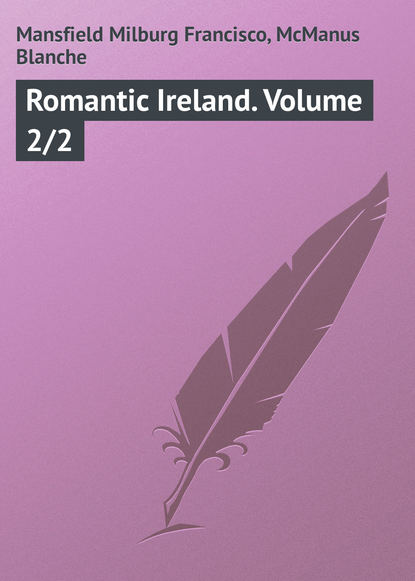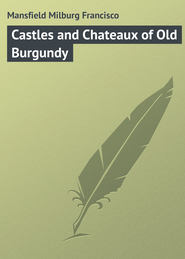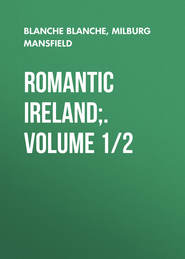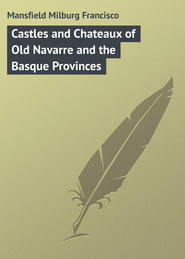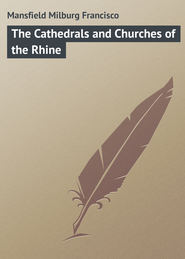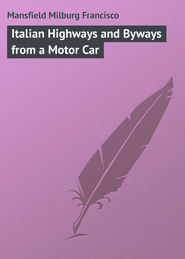По всем вопросам обращайтесь на: info@litportal.ru
(©) 2003-2024.
✖
Romantic Ireland. Volume 2/2
Настройки чтения
Размер шрифта
Высота строк
Поля
One ancient scrivener writes that at this period nearly all the learned were under the influence of Ireland. The great universities of Oxford, Paris, and Pavia, if not actually of Irish inception, were greatly indebted to the learning which spread forth from the Green Isle. There is scarcely a Continental centre of learning, from Palermo to Bruges, or from Grenada to Cologne, where some Irish saint, patron, or monkish scholar is not known and revered.
Cork should be endeared to Americans by reason of the association with the city of two whose names will never be forgotten – William Penn, the Quaker, and Father Mathew, the great temperance advocate.
In proof of the successful labours of the latter, a great writer of his time stated that not a single instance of drunkenness came under his observation during a sojourn of some weeks in Southern Ireland. It is a happy change from the rollicking recklessness of the ould Ireland of the fictionists and comic-song writers, which, let us hope, has gone for ever, if it ever existed. Father Mathew is buried here, in St. Joseph’s Cemetery, and a bronze statue to his memory stands in Patrick Street.
Cork is a picturesque and interesting old city. Its churches are mostly modern; but St. Finbarr’s Cathedral stands on the site of a very old and famous church, and is itself a fine building.
Cork is one of the principal places where the genuine Irish cloak is at home, and most picturesque it is, though few of the younger women of to-day affect it. For the most part, the girls wear the universal shawl, draped over head and shoulders. The cloaks worn by the matrons and elderly women are great full-length wraps of a black or dark-blue cloth, with a wide hood. Rumour has it that they cost from five to ten pounds apiece, and last, literally, from generation to generation, being sometimes passed down as an heirloom from mother to daughter for half a century. There is a factory for the manufacture of these capes at Blarney, not far from the celebrated castle, and the product finds a large sale among lady visitors who like to spin along the roads at thirty miles an hour, and feel it unbecoming to wear the hideous motor-cap and mask of fashion.
Cork abounds in “cars” of all degrees of decrepitude and luxuriousness. The Irish jaunting-car is much more a real accessory of Irish life than the shillalah or the shamrock. In Wicklow one finds the cars more numerous than elsewhere; in the west they are the most decrepit, and in Dublin the most luxurious; but in Cork, of all centres of population, they appear to be the most in use.
There has been considerable fun poked at them. They are certainly not beautiful, comfortable, or magnificent, and their drivers, like the “jarvies,” “cabbies,” and “cochers” of other lands, are a species apart from all other humanity.
In some parts of the country it is compulsory that the name of its owner, usually the driver, be legibly written on the tailboard of every car. This led to the story which Punch, if it did not invent, at least promulgated, that an inspector, who asked Pat what he meant by having his name obliterated, was met with the reply: “Ye lie, sor; it’s O’Brien.”
There are two distinct varieties of car in Ireland, quite apart from the tourist caravans, char-à-bancs, and omnibuses in which visitors are whirled between the beauty-spots of Erin’s leafy glades. The characteristics of each are plainly noted in the “inside cars” of Cork – practically extinct elsewhere – and the “outside cars.”
Seated in the indescribable native vehicle of Cork, which whirls one through the town with unexpected lightness and speed, you converse with the affable driver through a small hatchway, open in fine weather and closed in wet, and flanked on each side by a glass port-hole. If you ask for an explanation of the difference between the two varieties of cars, the driver will most likely reply:
“The difference between the two cyars, is it? That’s simple, yer honour. Sure, the outside cyar has the wheels inside, and the inside has them outside, as ye see!”
Since Blarney, the castle, and the lake are practically a suburb of Cork, they should be considered therewith. Blarney Castle – which is situated, as the native says, “a long mile from the railway station” – is of interest more because it is an exceedingly good specimen of mediæval castle building than because of the notoriety of what Father Prout was pleased to call an “impudence-conferring” stone.
As a sentiment or superstition, the alleged incidents or circumstances connected with the “Blarney Stone” are harmless enough; but far more importance has been given to its rather negative charms than is really justified.
Blarney Castle itself, with its surrounding “groves of Blarney which look so charming,” and its real and tangible fabric, is of vastly appealing interest; but, usually, it has faded into insignificance in the eyes of those who contemplate the setting which has been given to the all-powerful block of stone. The glib tongue of the native has done much to perpetuate the tradition that whoever kisses it – and accompanies the act with persuasive eloquence, so perceptible in all the folk around about Cork Harbour – is for ever endowed with blessings innumerable, if not actually with superhuman power.
The “real stone,” which bore the inscription, “Cormac MacCarthy Fortis Mi Fieri Fecit, A.D. 1446,” now untraceable, or at least illegible, was at the north angle. It was clasped by two iron bars to a projecting buttress at the top of the castle, several feet below the level of the wall, so that, to perform the kissing feat in ancient times, it was necessary to hold on by the bars, and project the body over the wall. The candidate for Blarney honours to-day will find another “real stone,” bearing the date 1703, and clasped by two iron bars, placed within the tower, where it is quite accessible.
The “Reliques of Father Prout” contain this allusion to the “Stone:”
“There is a stone there,
That whoever kisses,
Oh! he never misses
To grow eloquent.
’Tis he may clamber
To a lady’s chamber,
Or become a member
Of Parliament.
“A clever spouter
He’ll sure turn out, or
An out and outer,
To be let alone!
Don’t hope to hinder him
Or to bewilder him,
Sure he’s a pilgrim
From the Blarney Stone.”
The pleasure-grounds surrounding the castle, which were formerly adorned with statues, grottoes, alcoves, bridges, and every description of rustic ornament, are still very beautiful, although it is true that:
“The muses shed a tear,
When the cruel auctioneer,
With his hammer in his hand, to sweet Blarney came.”
And so their beauty has gradually diminished, and the fine old trees have been felled, and one looks in vain for the statues of —
“The heathen gods,
And nymphs so fair,
Bold Neptune, Plutarch,
And Nicodemus,
All standing naked
In the open air.”
As Father Prout further says, the —
“ … gravel walks there
For speculation
And conversation” —
are still in good order, and to wander in —
“The Groves of Blarney
…
Down by the purling
Of sweet silent streams,”
and among the —
“ … flowers that scent
The sweet fragrant air” —
is a most pleasant occupation for a summer’s afternoon.
Blarney Castle was built in the fifteenth century by Cormac MacCarthy, and consists, to-day, of only the massive donjon tower, perhaps 120 feet in height, and another lower portion, less substantial, though hardy enough to warrant the conjecture that, before the introduction of firearms, it must have been impregnable. It is almost as marvellous as the power attributed to the Blarney Stone that a few lines of rather cheap doggerel, containing in themselves no merit save their absurdity, should succeed in gaining a world-wide notoriety for a place which, otherwise, might not have been greatly celebrated beyond its own neighbourhood.
It is altogether incomprehensible to the writer that the real charm and romance of this castle, standing up in its fifteenth-century sternness amidst one of the greenest and most smiling districts in all green Erin, have been so obscured, of late, by the popular and vulgar traditions which are perpetuated in the horse-play of holding one another head downwards over the battlements to “kiss the stone,” though this is no longer really necessary, since another more conveniently placed stone has been provided for the purpose. It is a procedure which creates much excitement among a certain class of “trippers,” and, as it keeps a certain amount of coin in circulation in the neighbourhood, it may be accounted as a perfectly legitimate enterprise in that no actual harm is done. What a pity it is, though, that Ireland has no commission for the care of historical monuments, as has France!
Macroom, i. e., the Plain of Croom between Cork and Killarney, was once the home and gathering-place of the famous song-bards of the ancients, the druids.
Certainly the druids left a considerable impress upon Ireland, as they did upon Wales and Bretagne; though it may be questioned to-day, in the light of the latest information concerning the druidical race, if their strains of melody actually did pale the cheek of beauty, or even “rise the slumbering passion of the warrior to slaughter.”
Macroom, to-day, is chiefly famous for its castle. It was built by the Carews in the time of King John, shortly after the Conquest, and was subsequently in the possession of the MacCarthys. It was burned in the rebellion of 1641. The huge square keep, now covered with ivy, is all that remains of the original structure. Admiral Sir William Penn, father of the founder of Pennsylvania, was born here. Macroom, the centre of the sporting gentry of Muskerry, for whom this barony was always famous, can also boast of a band of poets racy of the soil. In 1774, the poems of John Connolly, a Macroom man, were published in Cork. He thus sings the praises of his native town:
“Whoever means to shake off gloom
Let him repair to sweet Macroom,





